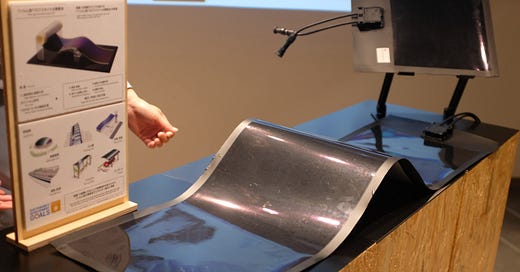Over the last few months, I've been come across an unfamiliar word in Japanese government documents. Unfamiliar to me, anyway. It’s perovskite.
Judging from my quick-and-dirty Internet searches, unless you’re deep into the world of clean tech, Western ears would be strangers to this term too.
Perovskite is the short-hand for perovskite solar cells. Among Japanese policymakers and technology companies, perovskite solar cells are hailed as one of the “next-gen” solutions for its clean energy woes. Worried about energy security, shortage of spaces open enough for new solar farms, and intense international criticism about its lukewarm attitude toward decarbonization, and bewildered in a world of supply chain constraints and geopolitical risks, Japanese elites are hanging their hopes on this relatively new solar technology.
Japan has some of the highest solar PV power generation capacity in the world, at over 74,000MW in 2021. But drastically increasing this share is expected to be hard because of the country’s mountainous terrain, densely populated urban areas, and the prevalence of farm lands in the countryside.
So, how will perovskite solar cells get Japan out of this dilemma?
Keep reading with a 7-day free trial
Subscribe to Power Japan to keep reading this post and get 7 days of free access to the full post archives.



